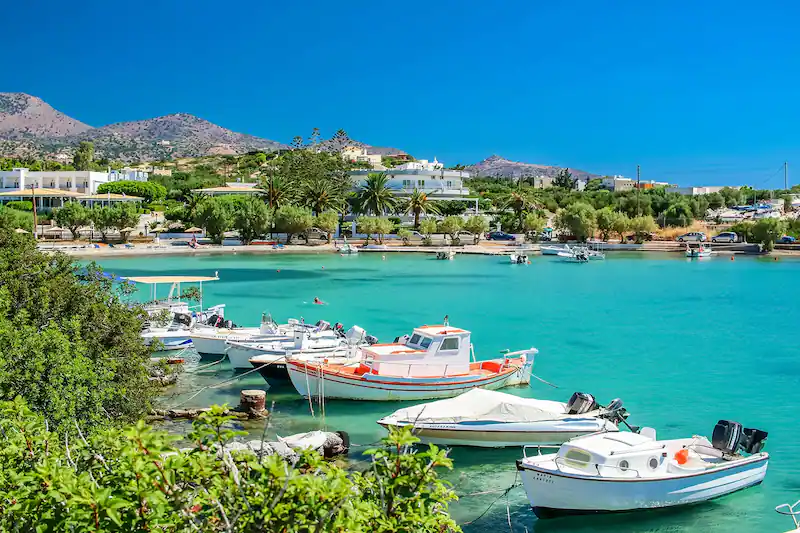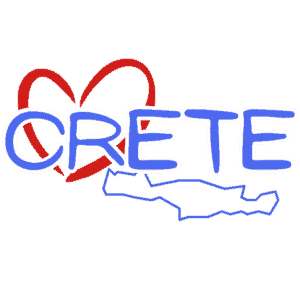Ah, Crete! Synonymous with idyllic beaches, ancient treasures, and landscapes draped in olives and oranges, this Greek island paradise is a world to discover. Nestled in the heart of the Mediterranean, Crete, the largest of the Greek islands, is steeped in mythology, history, and the warm hospitality of its people. But where exactly is Crete, and what makes it so special? Let’s embark on a journey to explore the charm of this remarkable island.
Location and Geography
Crete is situated at the southernmost tip of Greece, at the crossroads of Europe, Asia, and Africa. The island is approximately 260 km long and 60 km wide, making it the fifth-largest island in the Mediterranean. To the north, it’s bounded by the Sea of Crete and to the south by the Libyan Sea.
Crete’s landscape is a fascinating tapestry of rugged mountains, fertile valleys, sprawling plateaus, and enchanting gorges. The island’s terrain is dominated by a series of high mountain ranges, including the White Mountains (Lefka Ori), the Idi Range (Psiloritis), and Dikti Mountains. These ranges are punctuated by fertile plains such as the Messara Plain, Lasithi Plateau, and Omalos Plateau.
Adding to its picturesque geography are Crete’s stunning coastlines adorned with some of the most beautiful beaches in the world. From the pink sands of Elafonisi to the exotic palm forest beach of Vai, each beach offers a unique charm.

History and Mythology
Crete is a land where history and mythology intertwine, shaping a narrative that’s as enchanting as its landscapes. Crete was the center of the Minoan civilization, which is regarded as the earliest recorded civilization in Europe. The ruins of the Minoan palaces, such as those at Knossos and Phaistos, bear testament to this vibrant Bronze Age culture.
Crete’s mythology is equally enthralling. It’s the birthplace of Zeus, the king of the Greek gods, according to Greek mythology. The island is filled with mythological references, including the Labyrinth of the Minotaur and Icarus’s fateful flight.
From the Byzantine era to Venetian and Ottoman rule and its eventual union with Greece, Crete’s history is a rich tapestry that profoundly influences its culture, architecture, and even its cuisine.
Crete’s Major Cities
Crete is divided into four administrative regions, from west to east: Chania, Rethymno, Heraklion, and Lasithi, each with its unique charm and attractions.
- Chania: Known for its Venetian harbor, lighthouse, and narrow shopping streets, Chania is a blend of Venetian, Turkish, and Greek influences. This town’s charm lies in its old town, providing a nostalgic journey back in time.
- Rethymno: Home to a Renaissance-style old town considered one of the best-preserved in Greece, Rethymno offers a captivating mix of past and present. The Venetian fortress, historic buildings, and winding alleyways lend an old-world feel.
- Heraklion: As the capital of Crete, Heraklion is a vibrant city filled with historical sites, including the famous Palace of Knossos. It’s also home to the Heraklion Archaeological Museum, which houses Minoan artifacts.
- Lasithi: Known for its beautiful beaches and charming villages, Lasithi offers a more relaxed, laid-back vibe. The windmills of the Lasithi Plateau and the palm beach of Vai are among its key attractions.
Cretan Cuisine
Crete’s rich soil and temperate climate provide an abundance of fresh produce and high-quality ingredients, from olives and wine to honey and cheese. The island’s traditional diet, part of the larger Mediterranean diet, is celebrated worldwide for its health benefits and rich flavors. From delicious dakos and fresh seafood to the unique mizithra cheese and Cretan honey, the local cuisine is a gastronomic adventure.
Conclusion
Crete, a gem in the heart of the Mediterranean, is a fusion of beautiful landscapes, centuries-old history, and rich culinary traditions. Whether you’re a history buff, a nature lover, a foodie, or a beach enthusiast, Crete promises an unforgettable experience. Its location at the southernmost tip of Greece positions it as a cultural crossroads and a perfect destination to experience authentic Greek island culture.
The heart and soul of Crete are its people, whose warmth and hospitality are legendary. From the small mountain villages to the bustling city markets, the spirit of “filoxenia” or friendliness to guests is ever-present, making every visitor’s experience truly unique.
Whether it’s exploring the ancient ruins of Knossos, hiking the imposing Samaria Gorge, lounging on the stunning beaches of Balos, or indulging in a gastronomic journey, Crete offers a myriad of experiences.
In discovering where Crete is, we unravel a world steeped in history and mythology, adorned with natural beauty, and enriched by a warm and welcoming culture. Crete is more than just an island; it’s a destination that captures the heart and engages the senses. So, when will you embark on your Cretan adventure?
